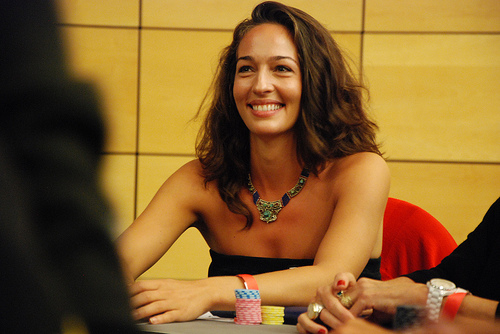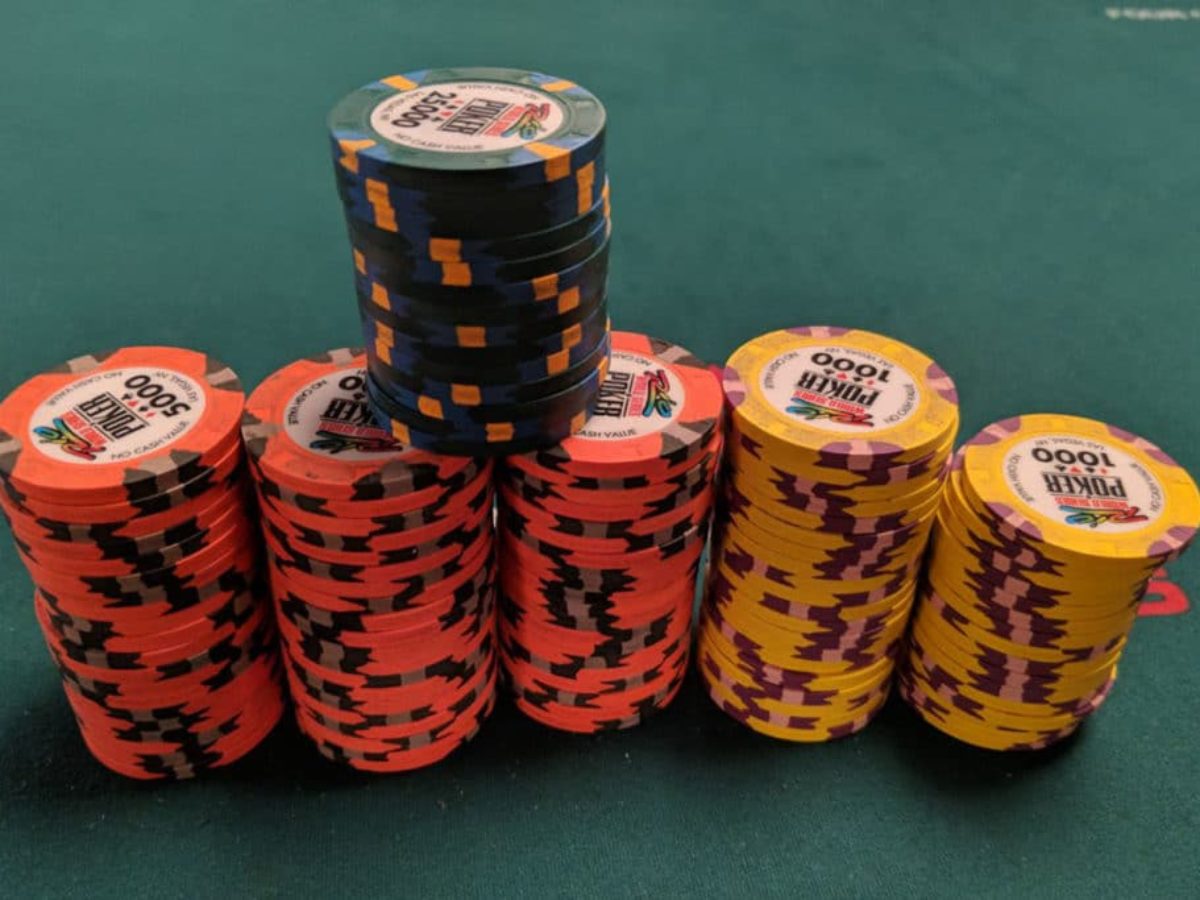Poker Tips Tournament
- Poker Tournament Tips For Beginners
- Poker Tips Tournaments
- First Poker Tournament Tips
- Poker Tournament Tips Reddit
This is one of the most important poker tournament tips. It’s actually something experienced tournament players use, and for good reason. Let’s look at the other side first: buying-in early. Let’s say you buy-in to a $400 tournament early. TLDR; Poker Tournament Tips. The list of common mistakes beginners make when playing poker tournaments is pretty lengthy. Follow these poker tournament tips to avoid these mistakes. As a result, you'll see that you're making more money in poker as your results improve.
(This article is a follow up to 'Bubble Tournament Strategy')
The late stages of a tournament begins when the money bubble bursts, and ends when players reach the final table (or final few tables, if it is a really large tournament). Your play during this stage of the tournament should change drastically, as you have now made the money and have the opportunity to climb in the payouts.

During the late stages, blinds will be placing immense pressure on almost everyone's stack, save for the chip leader. Once again, the most important factor in determining your correct style of play is your stack size, so we have written guides for playing the late stages with a short stack, an average stack, and a large stack.
You can finally see the finish line, so make sure to follow the strategies below to reach the final table and win a huge pay day:

Playing the Short Stack in the Late Stages
At this stage in the game the short stack is actually the simplest stack to play, because you only have two moves: all-in or fold. A short stack is any stack that only has ten or less big blinds. You can only last one or two rounds without making a play, so you need to be on the lookout for opportunities every single hand.
Although you only have two plays, you can use them in strategic ways to build your chip stack. When you are in late position, you should be pushing all-in whenever the table folds to you in order to steal the blinds. Also, if a couple players limp in you can try a squeeze play by raising all-in with the hopes that everyone folds. And it goes without saying that you are pushing all-in with any pocket pair or any two face cards, regardless of position.
If you are in the small blind and everyone folds to you, you should be going all-in the majority of the time because the big blind is very likely to fold. By stealing in late position, occasionally squeezing, and stealing from the small blind, you can pad your stack and build back up to an average-sized stack.
Playing the Average Stack in the Late Stages
Playing an average stack during the late stages of a tournament is a lot more difficult than playing an average stack at the start of a tournament, because the enormous blinds and antes will place far more pressure on your stack. Players with an average stack can steal, re-steal, and squeeze, but should avoid going all-in from the small blind, as you don't need to do that yet. In addition, average stacks should look to get all-in preflop in favorable situations.
Playing coin flips against smaller stacks is a good opportunity to build your stack. Short stacks will push all-in with marginal hands, so you can make calls with a wide variety of hands and still be ahead. If a short stack pushes all in, feel free to call them down with any pocket pair, or any two big cards. You will almost always either be ahead or be in a coin flip situation, so it is a profitable move overall.
Poker Tournament Tips For Beginners

Playing the Big Stack in the Late Stages
Big stacks should follow a similar strategy to the middle stacks during the late stages: steal from late position, re-steal occasionally, squeeze when it is appropriate, and call all-ins when you think you are ahead. However, with a big chip stack you can do all of those things, but more aggressively.
Depending on how badly you need a big pay day, you can vary your aggression. If you want to go for the win and can afford to place outside of the final table, go with a super aggressive approach and try to become the overall chip leader of the tournament. If you really need a final table finish and don't want to take a risk, you can take a more passive approach that will guarantee you a nice score.
Regardless of your approach, you should never be limping in as the big stack - either fold or raise. If you are going to call another player's all-in, make sure that you can comfortably afford to lose the hand. If the other player has big chip stack you better have a solid hand, because you are basically gambling with your tournament life.
Now that you know how to play the late stages, learn how to play the final table.
More General Poker Tournament Strategy:
Poker Tournament Strategy
Whether you’re playing micro stakes tournaments or the Sunday Million – you need to know what you’re doing to have a chance at winning. That seems obvious right? But trust me, there are too many players entering tournaments with no clue. That’s great news for you though cos it mean’s poker is not dead, despite what you hear. This article is going to give you poker tournament strategy tips that can be used to increase your cash rate, final tables and wins.
Don’t stop stealing the blinds
Tournament poker regs seem to nit it up and count on making it deep with premium hands. Don’t be one of them. Stay active, keep stealing the blinds from late position and don’t give up. A lot of poker sites are advocating the slow down approach but that’s what your opponents want. Regs are playing too many tables, not paying enough attention and missing profitable spots to steal the blinds. Tournament poker will always reward those who are able to consistently steal blinds and keep their stack alive. The fact that people are defending their blinds loosely should not make you fold more often in late position. Why? You have position. You have the advantage in a hand, even if your hand is weaker. Never forget that.
Pre-flop bet sizing
Consistency is very important when it comes to raising pre-flop. It’s fine if you want to make it 2.5x then stick with that. Please don’t change it based on hand strength. It’s 2020 and even the most basic of poker players will notice and instantly tag you. If you are a poker training video membership member, you’ll know my preference re’ pre-flop bet sizing but I will re-iterate it here non-members.
Early Position Min Raise
When I’m raising from early position, I lack information on the rest of the table. I want to open raise if I play but I also want to steal cheaply and/or keep the pot smaller against my opponents that flat in position. I also have no problem with it folding to the big blind and them calling a min raise. In fact, I welcome it. I will have position, a better hand and have increased the pot a little. My hand range is likely to be stronger than theirs and I have the pre-flop aggression.
Middle Position 2.2x
With fewer opponents behind us, I am happy to increase the sizing a bit and play a slightly bigger pot against the blinds. I don’t want to raise too much as I am still potentially acting first post-flop if someone in position calls. I am also slightly dissuading the blinds to call which is no bad thing in tournaments. I am likely to have a wider range from here so I have no problem with them just folding.
Late Position 2.5x
This may seem counter intuitive to some. Why raise more with a wider range? I want to play bigger pots when I have positional advantage. Sure, sometimes I will be light but sometimes I will be strong too. I want to charge the blinds more than the minimum to play against my wider range. By making it 2.5x I am also protecting myself against 3 bet bluffs a little more. Consider a min raise from the button. The big blind is far more likely to 3 bet bluff that than a bigger raise.
Notice – my pre-flop raises changes based on position – it doesn’t change based on hand strength. Therefore, it is logically consistent as I am raising 2.5x from late position with A-A and K-6s.
Defend the big blind
Poker Tips Tournaments
Everyone and their dog are loving the small ball approach these days. The standard small raise is popular and with good reason – it works. One of the results of this is that you have to defend your big blind more. It means calling raises with hands you won’t necessarily want to but pot odds and solid poker tournament strategy dictate you must. Let’s look at a quick example to illustrate this.
Blinds – 600/1,200 (antes 120)
Player A- 42,500
You – 36,900
It folds to Player A on the button. He is a capable tournament player. He raises to 2,500. The small blind folds and the action is on you. Before even looking at your hand, let’s do some poker maths.
Pot – (1,080 antes, 1,800 in blinds + 2,500) = 5,380
Cost to call – 1,300
Equity needed to call – 19.4%
As you can see, you need to defend super wide in this spot. You just can’t afford to fold too many hands when you are getting these kind of prices in big blind.

3 Bet with 30 bbs +
Tournament poker is often playing shorter stacks and less “poker” playing but that doesn’t mean you must play shove or fold poker. You don’t want to 3 bet bluff with short effective stacks cos it means the 4 bet from your opponent will always be all in. With slightly deeper stacks though (30 bbs+), you can afford to 3 bet bluff and take away a lot of pots. Poker tournament strategy is usually to attack short stacks. Screw that, 3 bet bluff the bigger stacks. I find that the big stacks are just as protective as the shorter stacks, if not more. It also means you can potentially get the last bet in if they decide to 4 bet. Good spots for 3 betting are when the raise has come from middle or late position.
CAUTION – Avoid 3 bet bluffing when they are raising from under the gun or UTG +1 as their range is likely to be tighter.
Learn continuation betting strategy
This article is dedicated to poker tournament strategy, not continuation betting but the fact is, c betting is an important part of tournament poker. You need to understand which boards favour your perceived range and what favours your opponent. A lot of players waste chips throwing out foolish continuation bets. You need to appreciate board texture, number of opponents and stack sizes when choosing whether to continuation bet or not. If you want more help with continuation betting, check out our article on the do’s and don’ts of continuation betting.
Isolate the limper(s)
An oldie but goody. Raising over a limper or limpers is still a very profitable play. It’s crazy to think there are still players that adopt this limp in mentality, but it’s great for us. If people want to try and limp into the pot with pocket 3s or A-9 offsuit, that’s fine, we will take their blinds all day. In some scenarios, it may seem prudent to over-limp but most of the time, just raise it 4x and win it. If they call, you can often just win it with a flop bet anyway. It’s a great way to build a stack in tournament poker and is also good for your table image as people. This might help you get paid later in the tournament.
Practice heads up poker
First Poker Tournament Tips
Many tournaments end in deals being done but what if yours doesn’t? What if you’re against a tough player or someone unwilling to deal. You need to know how to play 1 on 1. After all, if you want to win the tournament you have to beat the last opponent. Heads up is a great poker format. Some basic heads up tips are below:
- Raise every button
- Bet most flops
- Check raise more
- Bluff catch 2nd pair down
- Stay on top of your opponent, don’t let up
- Don’t show bluffs
Join Poker Training Video Membership
I hope you enjoyed this article on poker tournament strategy tips for 2020 and beyond. A final tip is a little plug for our training videos. If you enjoyed this article and would like to learn more, you can. By join as a member you can gain access to almost 1,000 minutes of poker training videos. I give more tips, secrets and advice beyond this article. You can see how I play tournaments, cash games, SNGs and strategy lectures designed to help members make money. The price of membership is only £49.99 for 1 year. You can join by clicking below or clicking the banner below for information. Once you’ve paid for membership, you will be sent your personal login details within 24 hours.